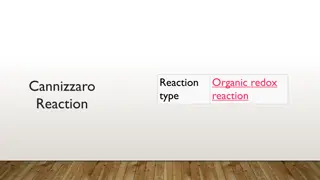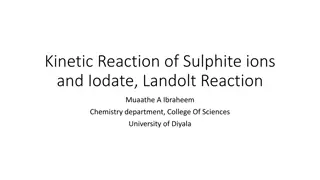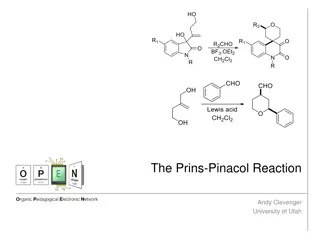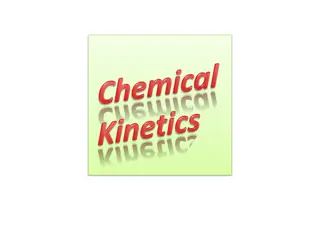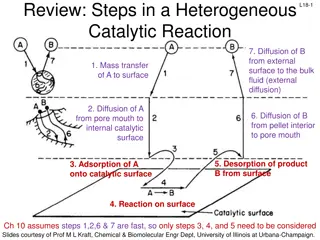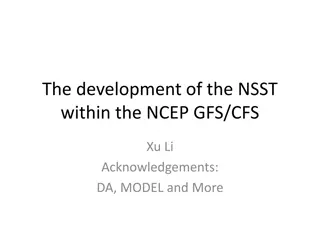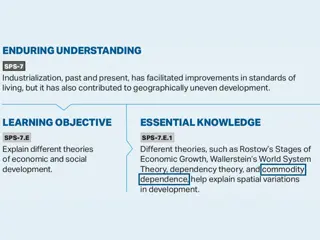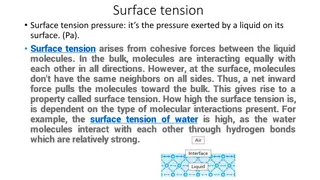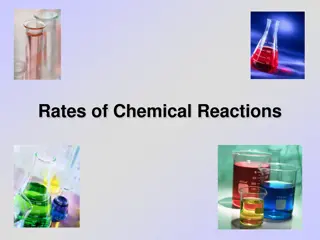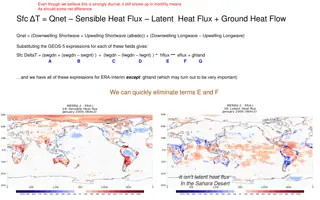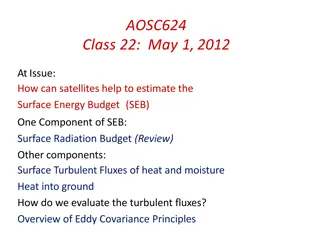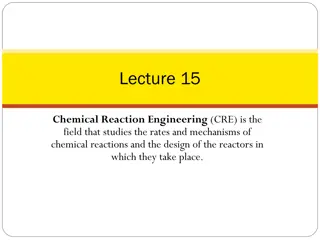
Unimolecular Surface Reactions and Kinetics on Solid Surfaces
Explore the fascinating world of unimolecular surface reactions and kinetics on solid surfaces, including the processes of adsorption, desorption, and decomposition. Learn about the Langmuir-Hinshelwood hypothesis and how reaction rates are determined based on surface coverage. Discover the different cases where decomposition rates vary in relation to adsorption and desorption rates.
Download Presentation

Please find below an Image/Link to download the presentation.
The content on the website is provided AS IS for your information and personal use only. It may not be sold, licensed, or shared on other websites without obtaining consent from the author. If you encounter any issues during the download, it is possible that the publisher has removed the file from their server.
You are allowed to download the files provided on this website for personal or commercial use, subject to the condition that they are used lawfully. All files are the property of their respective owners.
The content on the website is provided AS IS for your information and personal use only. It may not be sold, licensed, or shared on other websites without obtaining consent from the author.
E N D
Presentation Transcript
PHYSICAL CHEMISTRY Mrs.Anita
KINETICS OF UNIMOLECULAR REACTION ON SOLID SURFACES
UNIMOLECULAR SURFACE REACTION It involve one molecule of the reactant.The chemical reaction between the reactant and vacant site of the surface.The elementary process are as follow, A+S AS :adsorption AS A+S :desorption AS products :decomposition According to Langmuir Hinshelwood hypothesis,reaction rate may be put as, r=K2 -fraction of the surface covered
according to steadt state principle , d[AS] K1 [AS]- K-1 [AS]_ K2 [AS] dt [s] concentration of the vacant site on the surface [S]=C,(1- ) [AS]- concentration of the surface = K1[A] K1 [A]+ K-1 + K2
On substituting the value of ,in reaction rate r, r= K2 K1 [A] K1 [A]+ K-1 + K2 The above equation may be rearranged becomes as, 1 1/ K2 + K-1 + K2 r K2 K1 [A] From the above equation ,it follow a linear plot of ,r-1 [ A]-1
CASE 1; The rate of decomposition become very large a compared to the rate of adsorption and desorption . K2 >>K1 + K-1 for example decomposition of No2 on gold ,and HI on platinum . CASE 2: The rate of decomposition become very small as compared to the rate of adsorption and desorption, K2 <<K1 + K-1 At low pressure the rate become as , r= K2 PA
THANK YOU THANK YOU ..


